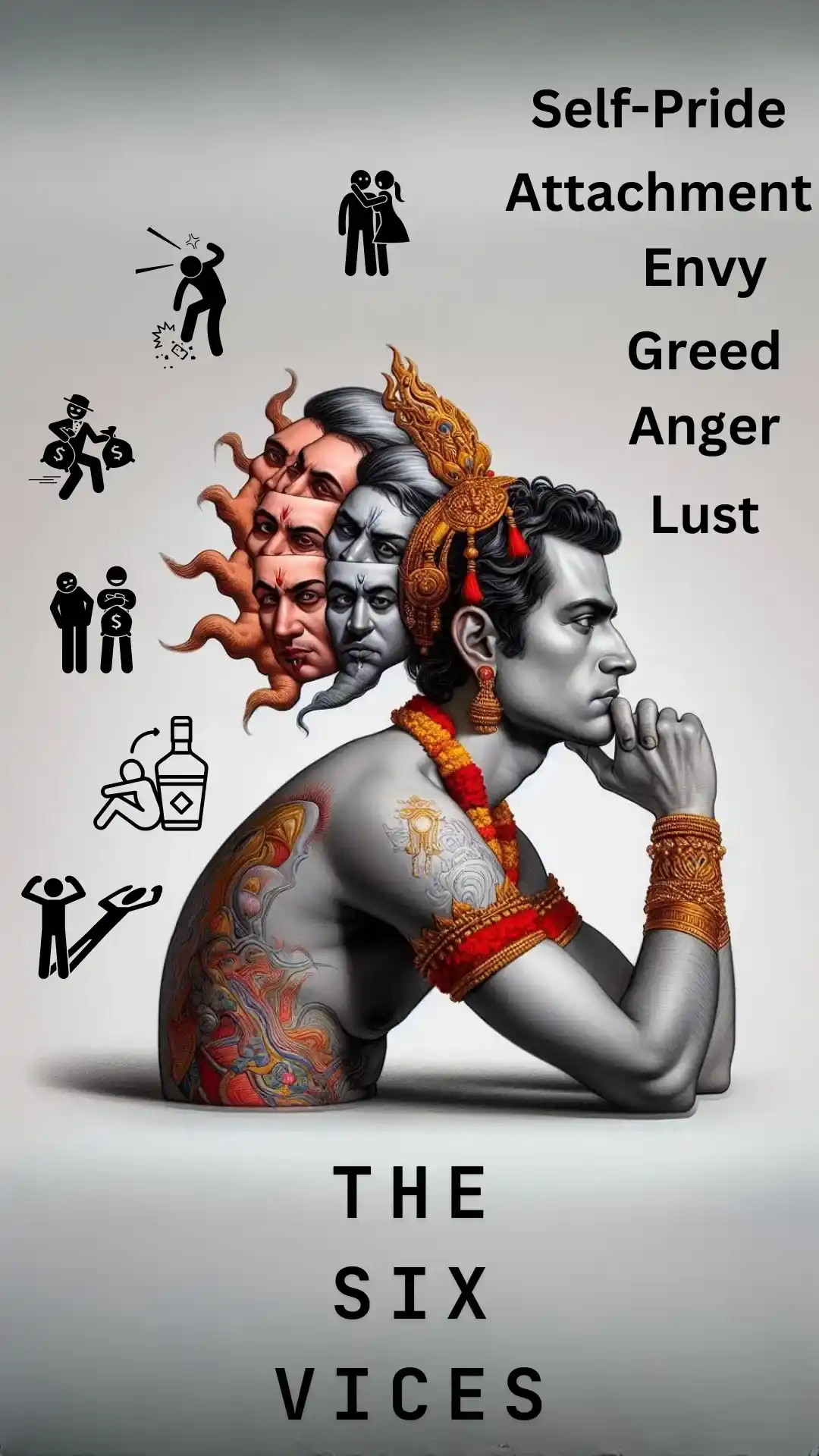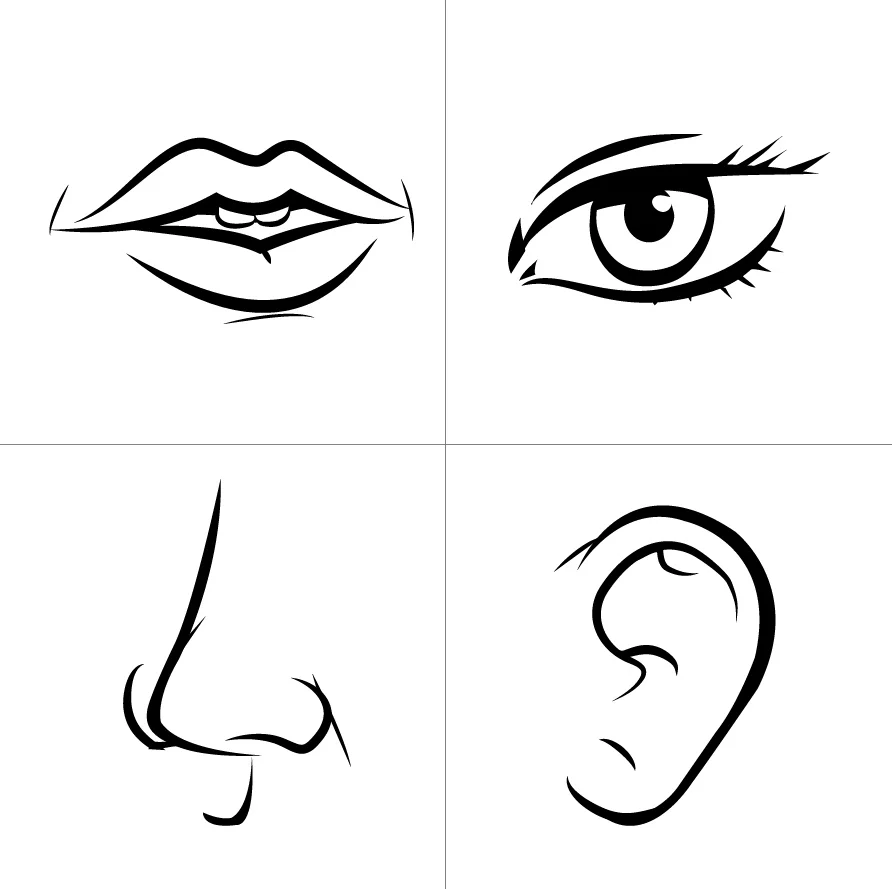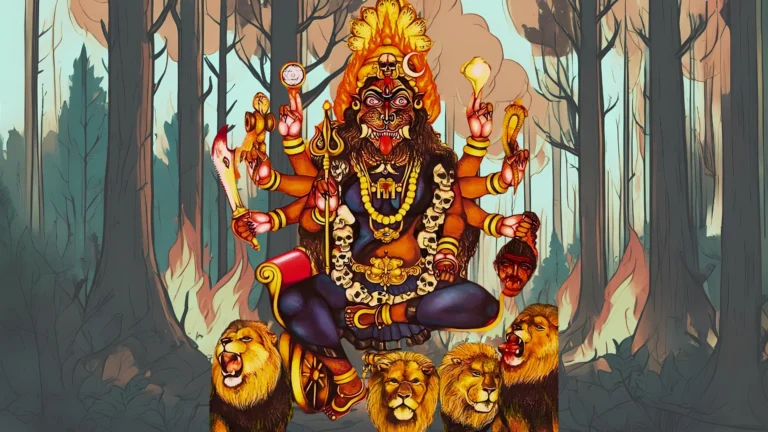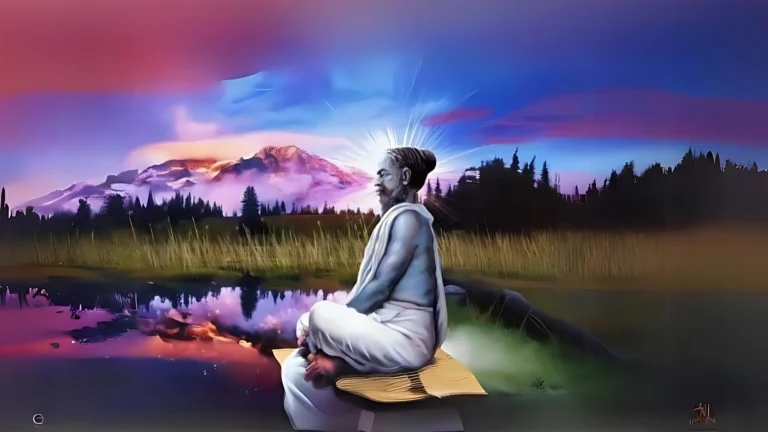Please Like the Blog and Share it for Maximum Reach
Table of Contents
Understanding Vairagya
What is Vairagya?
Vairagya is the charactersitic of the soul, through which a person attains utter dispassion to material living and indulging with the mind and senses, where the Jiva relies on Character and inner discipline of Tapasya, to get complete control on one’s minds and senses. Vairagya is a direct outcome of inner purification and realization of the fact that material attainments and inner values are not inter-related
How can one attain Vairagya?
The simplest way to attain Vairagya in this age of Kali is Pure Bhakti or Sharanagati towards a God-Realized Sadhu/Guru and through the Guru, on Bhagavan. By following the strict instructions of the Guru with Love and Surrender, one can easily attain Vairagya.
Vairagya Defined
In this Video post we shall talk about Vairagya as applicable to us, as indicated in the Brahma Sutras. The fundamental reference material for the Brahma Sutras is the Bhagavad Gita. Let us have a look at how Bhagawad Gita defines Vairagya in Chapter 6 Verse 35
श्रीभगवानुवाच
असंशयं महाबाहो मनो दुर्निग्रहं चलम् ।
अभ्यासेन तु कौन्तेय वैराग्येण च गृह्यते
śrībhagavānuvāca
asaṃśayaṃ mahābāho mano durnigrahaṃ calam |
abhyāsena tu kaunteya vairāgyeṇa ca gṛhyate
Lord Krishna says: “You are right, O mighty-armed son of Kunti, indeed the mind is obstinate and transforming all the time. It is arduous. However, by Abhyasa meaning practice and detachment (which means Vairagya), the mind can be controlled.
Vairagya means detachment or discarding attachment. To apply Dispassion in our life, it calls for a certain level of knowledge on the nature of attachment. Here are a few points to consider:
Attachment is subjective with an ability to shape shift
One person might be excessively attached to money while the other might simply be generous. This is because the world is dynamically changing.
The relevance of people, things, and places change dramatically in our life and due to this constant fluctuation our attachment gets diverted to different people at different stages of life. It is a common trend that as children we are dependent and attached to our parents.
While some may continue to remain attached to their parents, after a certain age they may extend it to their spouse. Furthermore, the list continues to grow with some inclusions and exclusions, encompassing children, job, money, house, etc in the vortex of our attachment.
Attachment thus has an unswerving negative impact on our spiritual pursuits as one focuses more on material accomplishments and people.
Just like how a chameleon changes its color to be untraceable, attachment changes form at various stages of life.
Having said that, we must realize that physical experiences are representative of the inner world. Buried within us, our instincts and the 6 vices start unfurling as each phase of life unfolds.
For example: In infants, fear is dominant and as they enter adolescence Lust starts to creep in. While these continue to gain more vigor in adulthood, greed, envy, pride, etc also become predominant in individuals. These instincts influence our choices and shape our life. Now that we have understood the nature of attachment let us see how we can exercise Dispassion in life. Let us take an example.
The Role of Lust in Vairagya
Lust, though a vice, gains sanctity only when directed towards begetting god-conscious children. For couples who beget children with this mood, lust does not necessarily become a stumbling block in sadhana because it was consciously directed for a specific purpose. It was not a mindless act.
However, once the purpose is met, when the family is complete, a serious spiritual aspirant must consciously withdraw from any sexual act that may be enforced by the mind out of habit. When indulging in the activity without the sacred purpose, it becomes a source of untold misery.
7/8 Questions from Sanatana Dharma
The scores generated in this Quiz may or may not be absolute. There may be right or wrong answers to each Question. A percentage towards 100 indicates that you are more aligned to the overall subject matter.
Detachment should be used to Attain Bhagavan
So, in this example Vairagya is exercised after attaining parenthood. Yet, there are sadhaka couples who exercise Dispassion to uproot sexual desires at an early stage in life, say in adulthood itself. Many Sadhaka couples, though in wedlock, refrain from sexual activities, because of their firm resolve to attain Bhagawan.
Then, though there might be bouts of sexual impulses due to the biological framework, it shall only occur at the mental platform and with the Grace of the guru, the spiritual couple shall be able to gradually traverse this obstacle completely.
Thus, despite remaining in marriage, they would have transcended the typical norms and graduated to Vanaprastha ashram, wherein both husband and wife, amicably pursue Bhagawan. Dispassion can be applied by the Jeeva at any stage of life.
How can We Conserve Brahmacharya
For students (Brahmacharis), abandonment of activities that provoke and agitate the senses and the mind towards sexuality, greed, violence, etc is mandatory, without exception.
In more specific terms: abstain from watching content that agitate the Karma Indriyas (outward going senses like hand lower sexual organs etc), avoid associating with people who gossip and talk about lowly matters, stop onion garlic as they increase Tamasika qualities, quit drinking and smoking as they delude the mind and make the senses addicted etc.
When the mind is purified and lower tendencies are curbed at an early stage of life, there is more scope for rapid spiritual growth. That is the reason why Brahmacharya is considered austere and sacred.
From these examples we get a holistic view on Vairagya. Detachment manifests in different magnitudes and ways in the life of people. There is no one right way. It completely depends on the spiritual maturity of the sadhakas and their involvement with the world.
The more one becomes familiar with the real nature of things and the world at large via the aid of Viveka (discrimination), Dispassion becomes more prominent, accelerating one’s spiritual journey. Viveka is a powerful tool that enables us to exercise Vairagya in the right spirit. To know in detail, kindly watch the video below.
The process of visualizing the world with the lens of Viveka and making decisions born out of Vairagya takes time. Temptations, and desires that were allies to our ignorant self may crop up to delude us from our spiritual journey. It has the power to judge the roots of our discrimination (Viveka) and Dispassion.
But, one has to become aware of the antics of the mind and instead work towards solidifying the spiritual requisites. Giving in to our temptation is always easy, but is always wrong. This awareness can only be ignited when one is in the Conscious Grace of a God-realized Guru.
Guru alone can trigger this heightened sense of awareness. Many talk about being guided by Bhagavan Himself. But this is usually hearsay, because unless one is under the direct Grace of the Guru, resisting Temptations is almost next to impossible, considering the times that we currently live in.
The Great Impediment of the False Ego in attaining Detachment
Sometimes, it so happens that man is extremely identified with the ego, due to which the vision to discriminate between the real and unreal gets blurred. When Viveka is at its preliminary stages, Vairagya, if exercised forcefully, in the absence of Guru and trying to go by the book, can create turbulence in life.
It increases inner conflict as there is a clash between the hidden desire and the contrasting action. Here is the need of a spiritual preceptor who sheds light on the crevices of the mind, where ignorance remains hidden. A perfect spiritual master apprises his disciples of their shortcomings.
He is the one who highlights our inner filth and develops our vision to see it. He pinpoints our inner tendencies which may at times be difficult to confront by the disciple. But, a sincere disciple clasps the golden opportunity to break the shell of ignorance and grow spiritually under the care of the guru.
Following Guru is Indispensible to develop Dispassion
A Guru guides while the disciple follows and applies his teachings. Once Viveka completely matures, Vairagya dawns upon the Shishya by the grace of the preceptor. Thus, in earlier days, the disciples were in close communion with their guru because they received personal and curated guidance, which was exclusively for them to follow. Let us take an example of how a Guru may enlighten his disciple in this regard.
A certain disciple was instructed by his guru to clean the temple premises every evening. The seva continued for months until the guru summoned him and asked him to halt his seva. This instruction of the guru breaks the continuity of routine, which may trigger responses of contrasting nature.
In the first response the sadhaka may feel reluctant. He may assume that the seva is important for his own spiritual growth, which in a way goes against the instruction of the Guru. Some may feel that the seva gives them a sense of accomplishment and also makes them special in the eyes of the guru.
Thoughts of various kinds may prop up in the mind of the disciple, initiating a certain response from the disciple. Here, the Viveka is not completely matured as the individual operates heavily from the mind. His deep rooted egotism, self importance, the tendency to hear praises, etc shall prevent him from adhering to the instruction.
Thus, Vairagya will not manifest under such circumstances. When the mind selectively accepts or rejects the instruction, to suit its selfish motives, both Viveka and Vairagya are far from one’s reach. This is because the disciple lacks firm resolution to attain Bhagawan. He is still seeking importance from the people, and thus steeped in ignorance.
Implementing the Guru’s Instructions is Vital
The Seva was supposed to cleanse the mind and not to fan the false ego. It is an act of service and not ownership. The realized master shall enquire and highlight the shortcomings of the disciple which he must introspect. The ego might get wounded. But, once the disciple surpasses this obstacle, the path ahead starts to clear up.
On the other hand, if the disciple realizes that it is not seva that holds significance but his receptivity towards the Guru that is important, he shall immediately halt the Seva. In this case, the disciple has been vigilant enough to not associate his mind with the action. He took the service and relinquished it at the behest of the guru.
Thus, at the initial stage, Seva was important to discipline the mind but at a later stage it was abandonment of that seva that marked the progress of the disciple. This is in itself Vairagya. So, the guru asking the disciple to relinquish the action was merely to observe whether the disciple has been able to unfasten the grip of the mind.
The Great Spirit of Dispassion
Vairagya means relinquishing that which poses a hindrance to one’s spiritual journey. True Vairagya is relinquishing desires, cravings, attachments, ambition, lower tendencies, bad habits, etc. The Shastras have glorified Vairagya. It states that the one who refuses to see or hear anything worldly, gains an invincible power to control things.
Through our eyes, we see attractive places, food, people, and through our ears we hear stories and information about the same. The overwhelming data of the external world drives the mind crazy. The eyes and ears thus act as direct mediators between Maya and the soul. One who severs this cord of the senses becomes a perfected Vairagi and dawns upon him the power to control. What is the superpower all about? Let us see:
Desire chokes our Freedom
Throughout our discussion, we have tried to grasp the import of Vairagya. When a person desires, he lacks control because the object of desire gains dominance. For example: A man desires a woman. The woman gets an upper hand as she never desired the man but in turn she is being desired. A child wants a toy.
So, the toy becomes the yardstick of the child’s happiness. So, till the time there exists a person with desires and the object of desire, there exists dissatisfaction. Here the happiness and sense of control get curtailed. Our happiness gets confined to the object of our desire that is always independent of us.
Only things that are apart from us can be desired and the fact that they are apart from us yields a fleeting experience of joy. The joy is not permanent and everlasting. On closer observation, desire ceases to exist if the dual nature perishes. Because, we cannot desire a thing that is contained within us.
There is No Happiness Where there is Desire
But, at the same time, we cannot get happiness unless the object of our happiness is inseparable from us and can be controlled by us. Therefore, desire and happiness are dichotomous, having no common meeting point. A person who has controlled his senses and mind no longer desires.
Which means his dependence on something external perishes and he relies on his very self which exuberates only joy. He thus gains immense control, as he has nothing else left in his consciousness. In the coming video post we shall look at the next spiritual discipline of the Sadhana Chatushthaya
Please Like the Blog and Share it for Maximum Reach



















